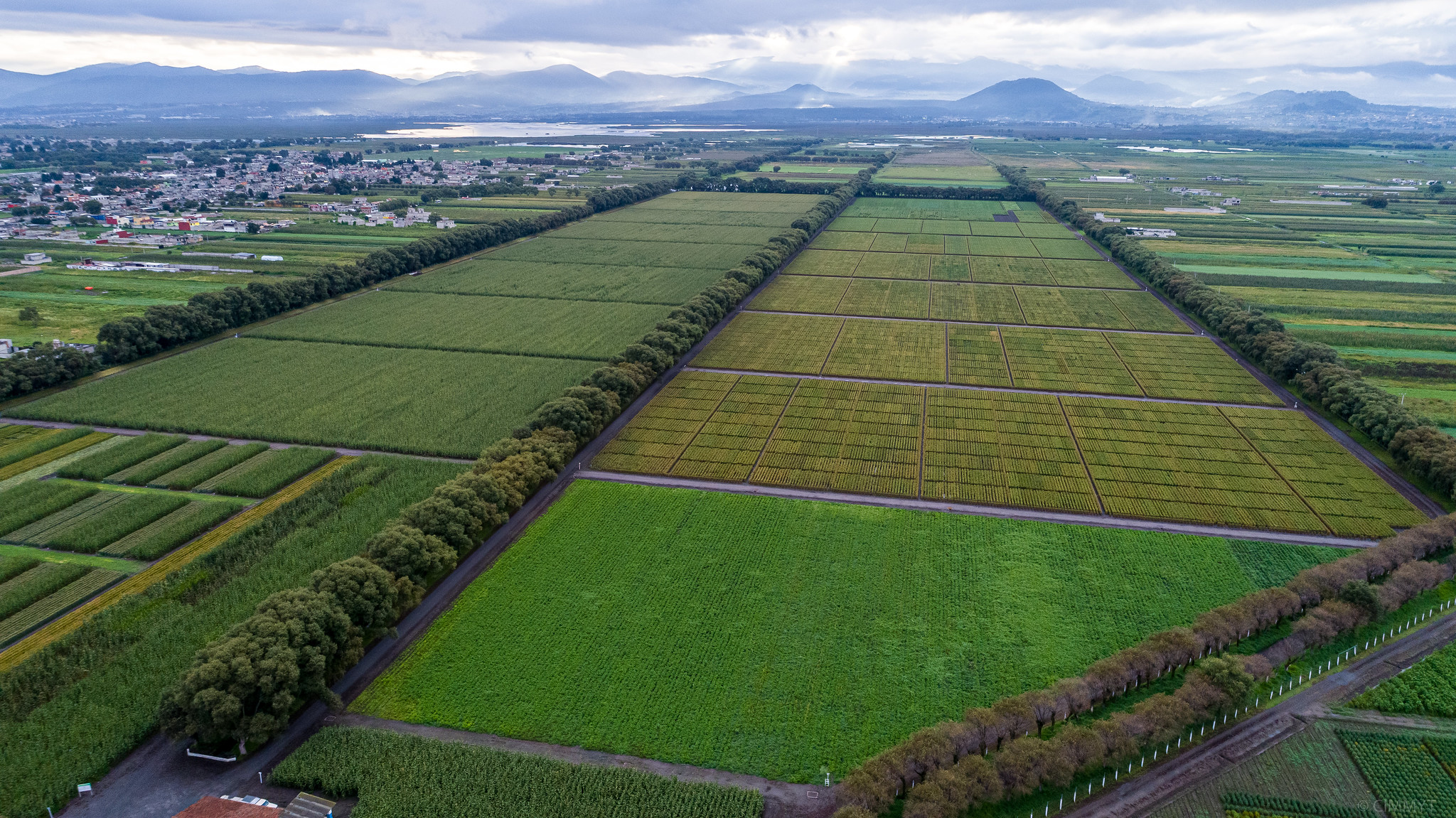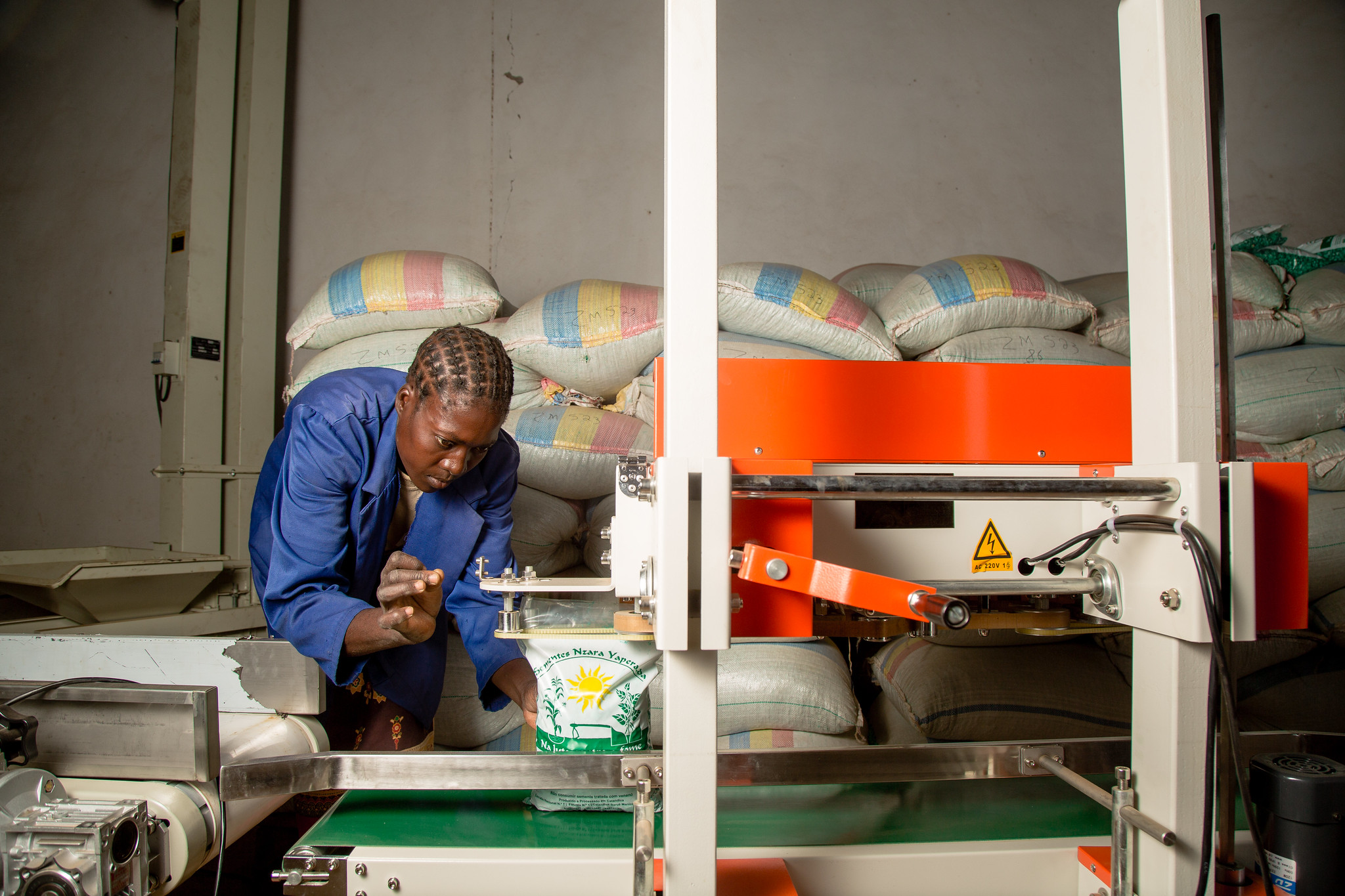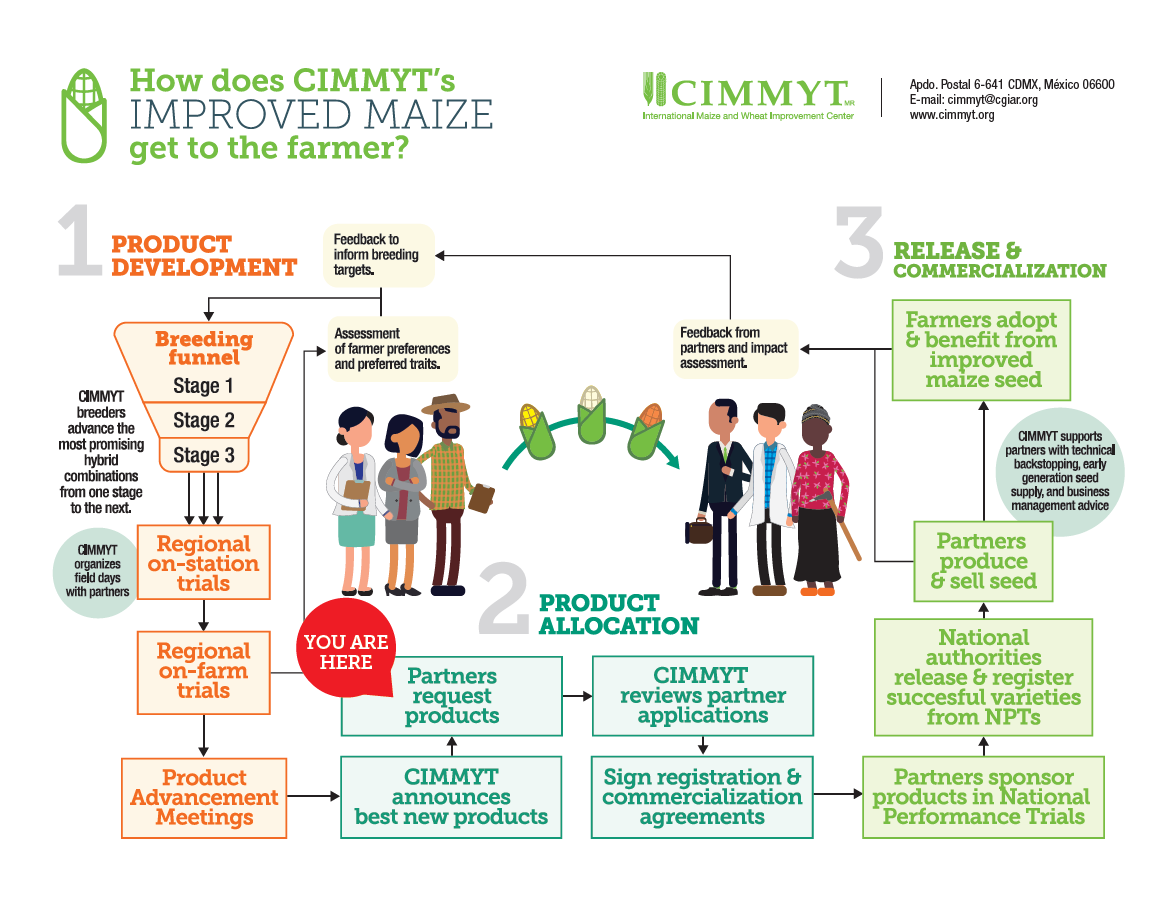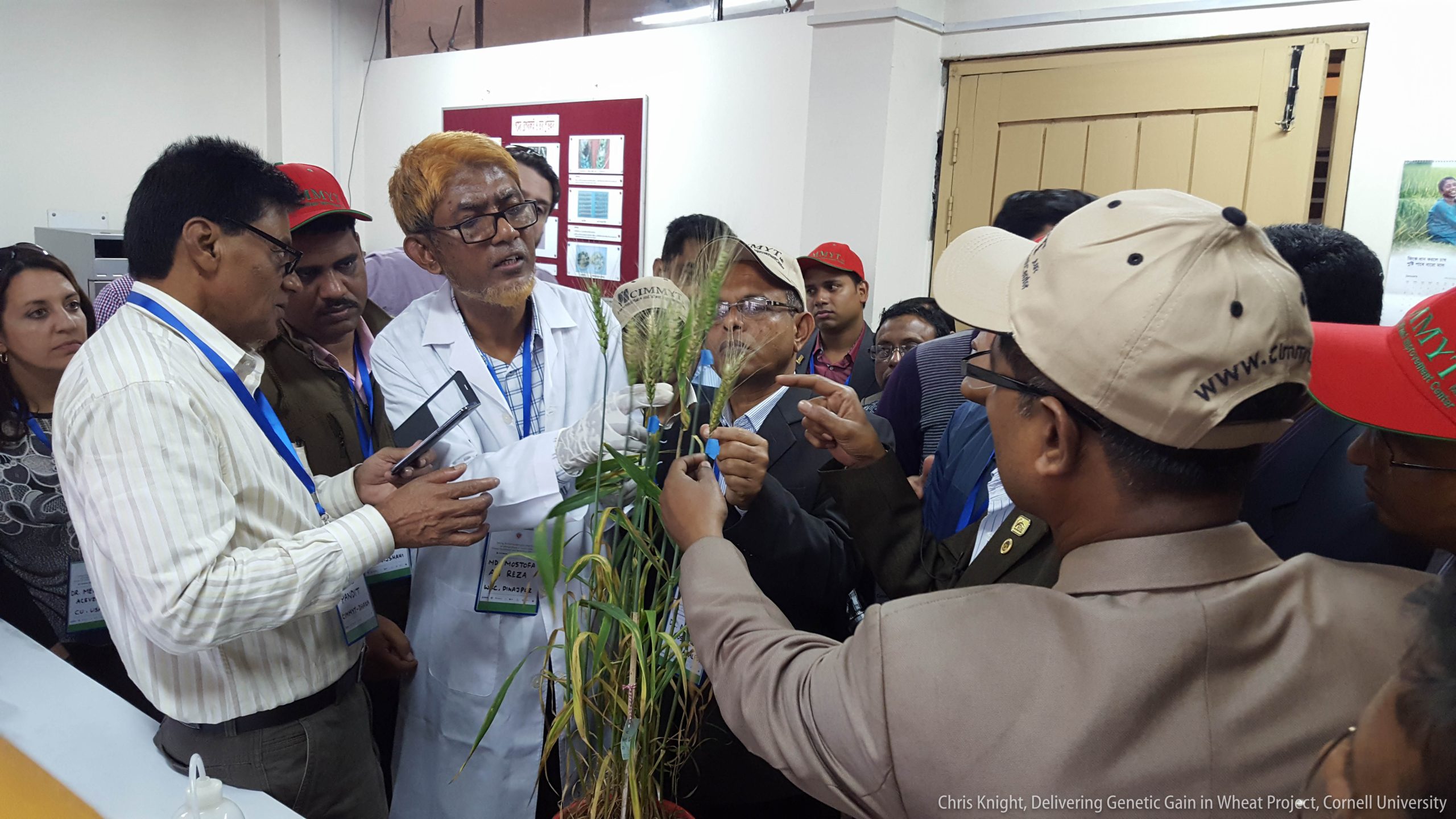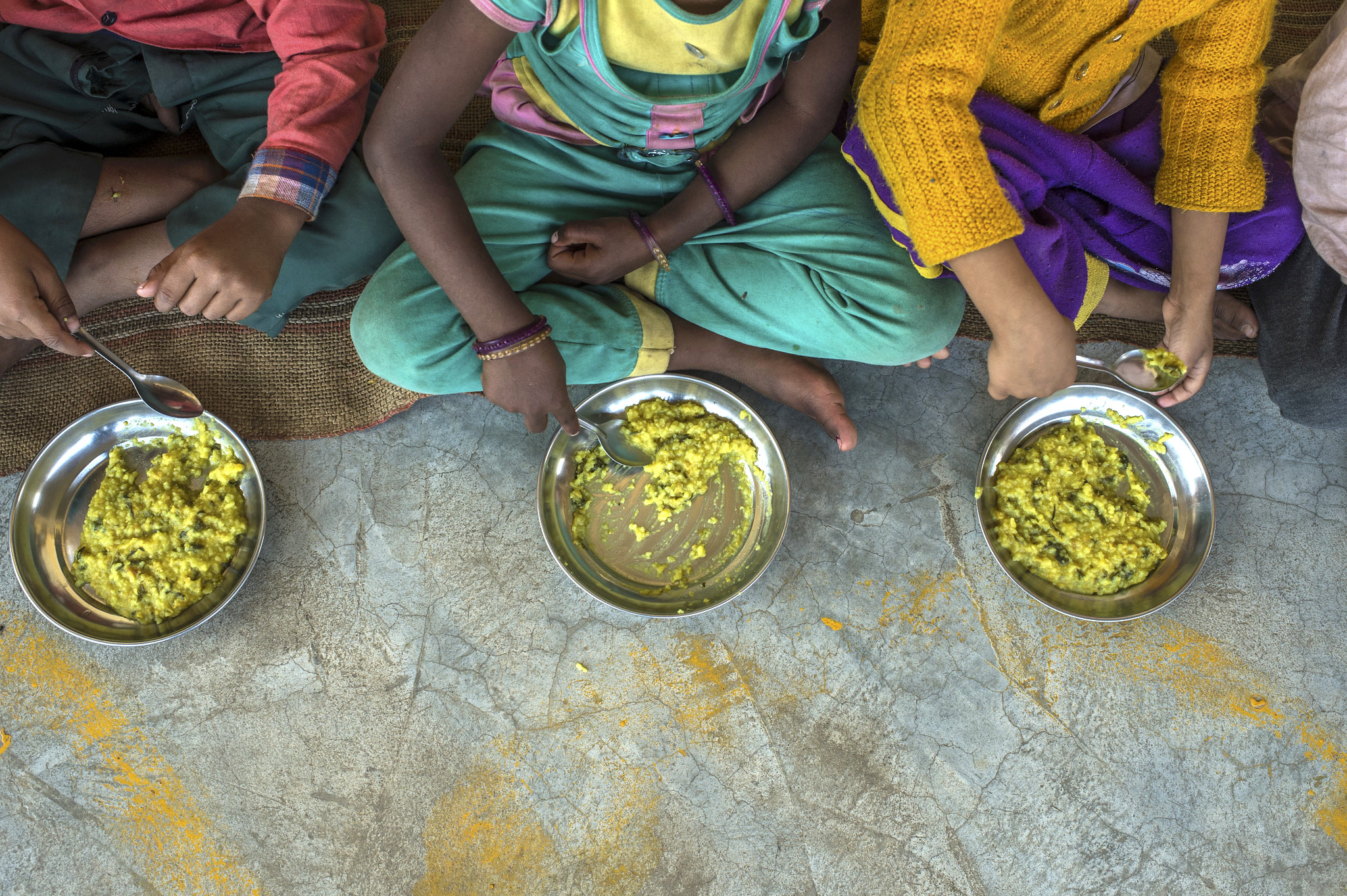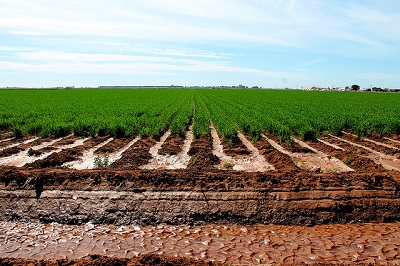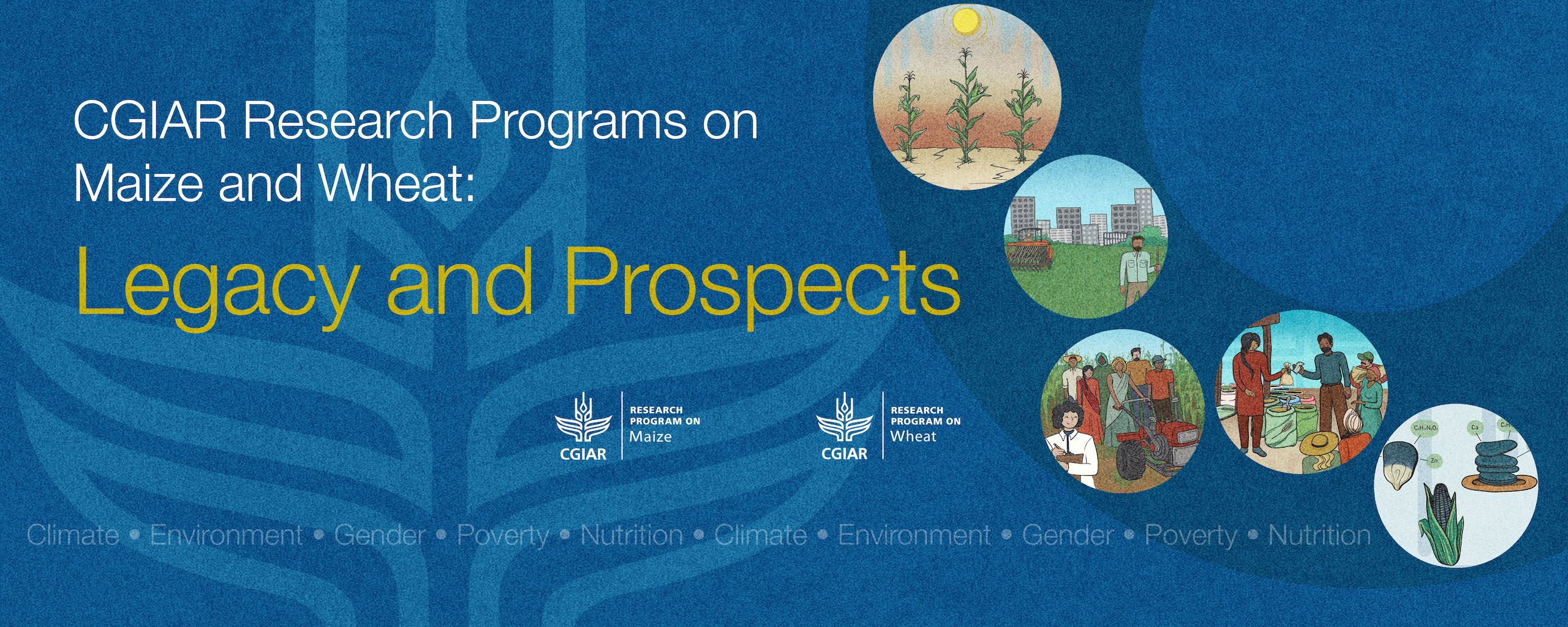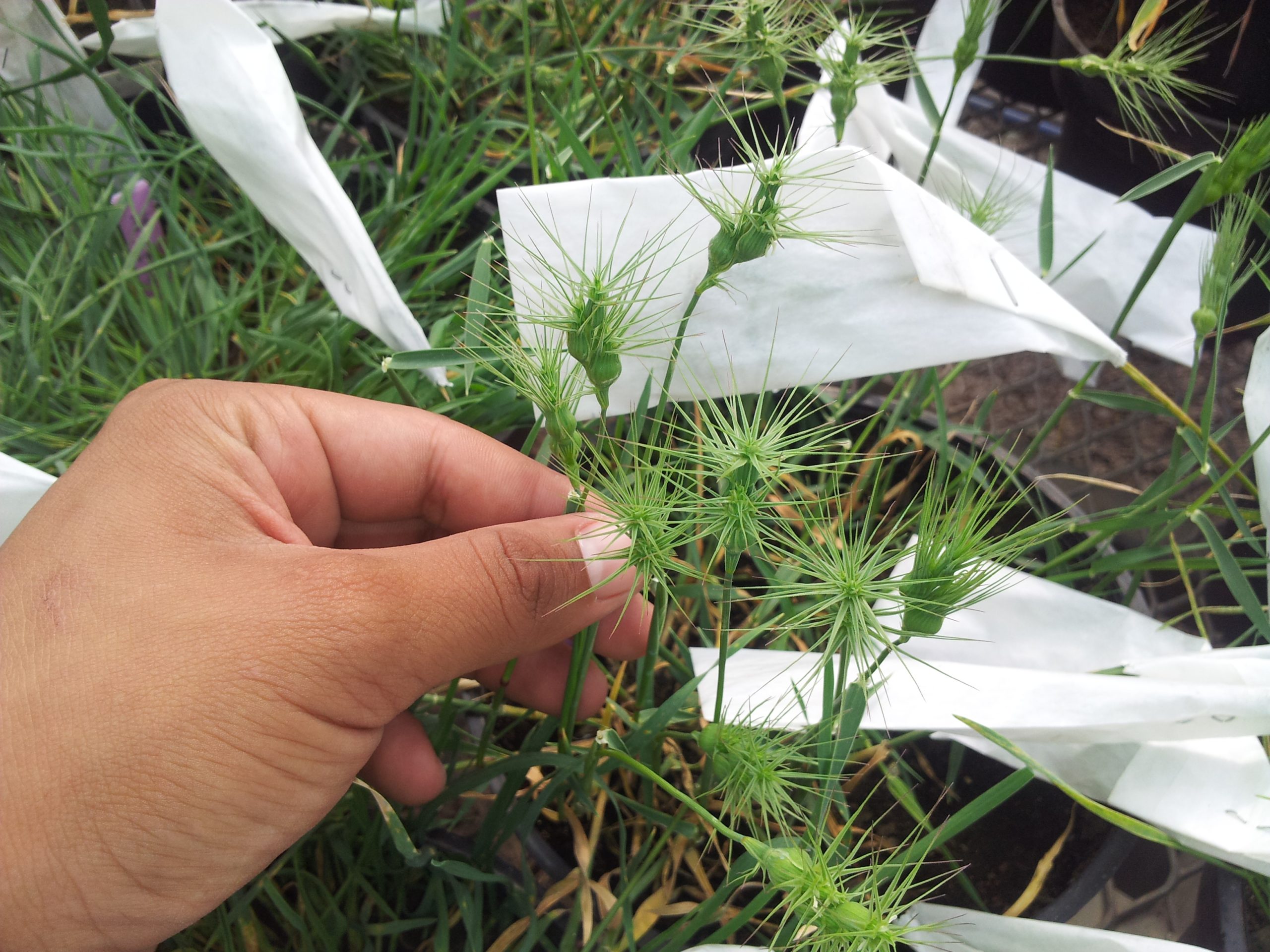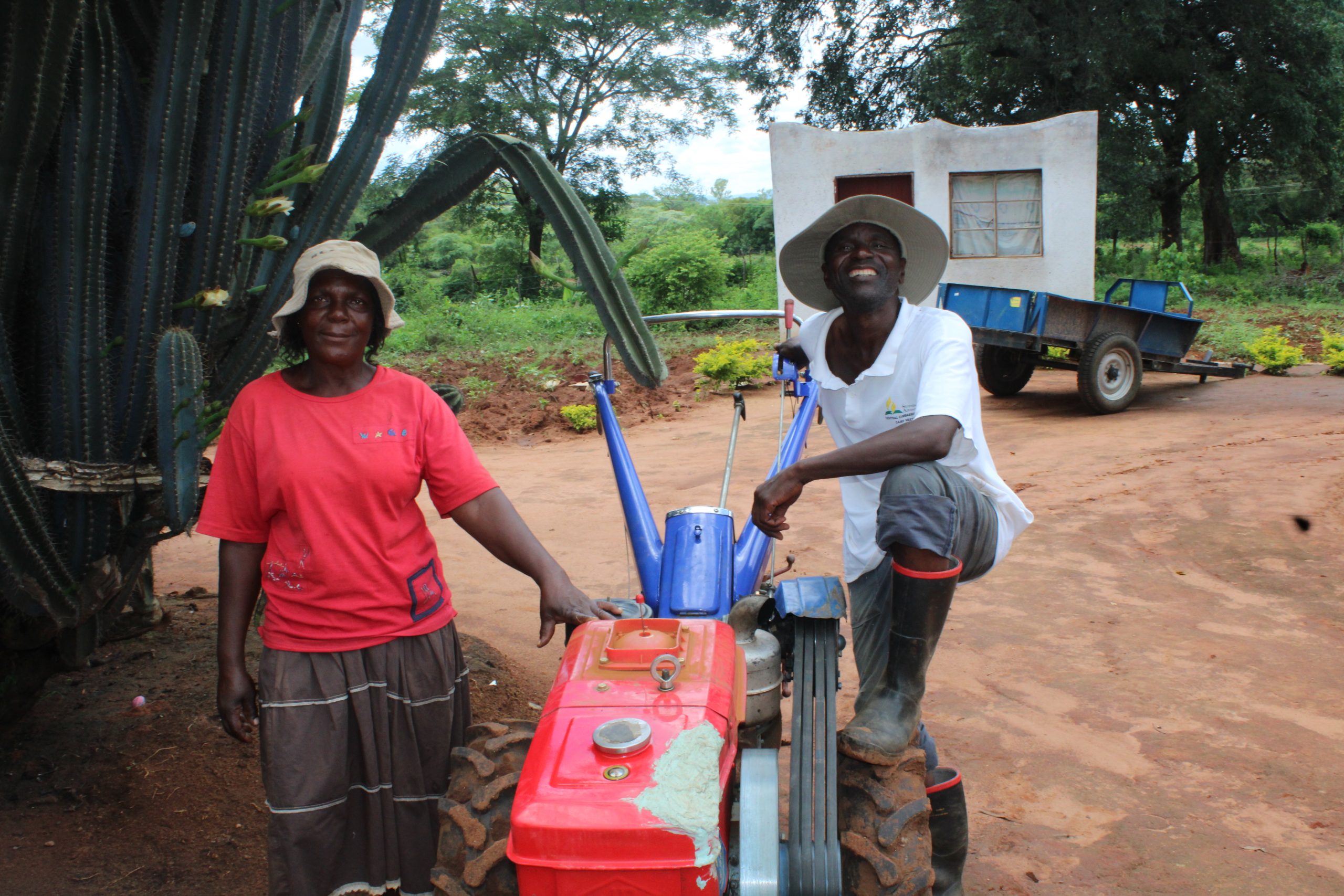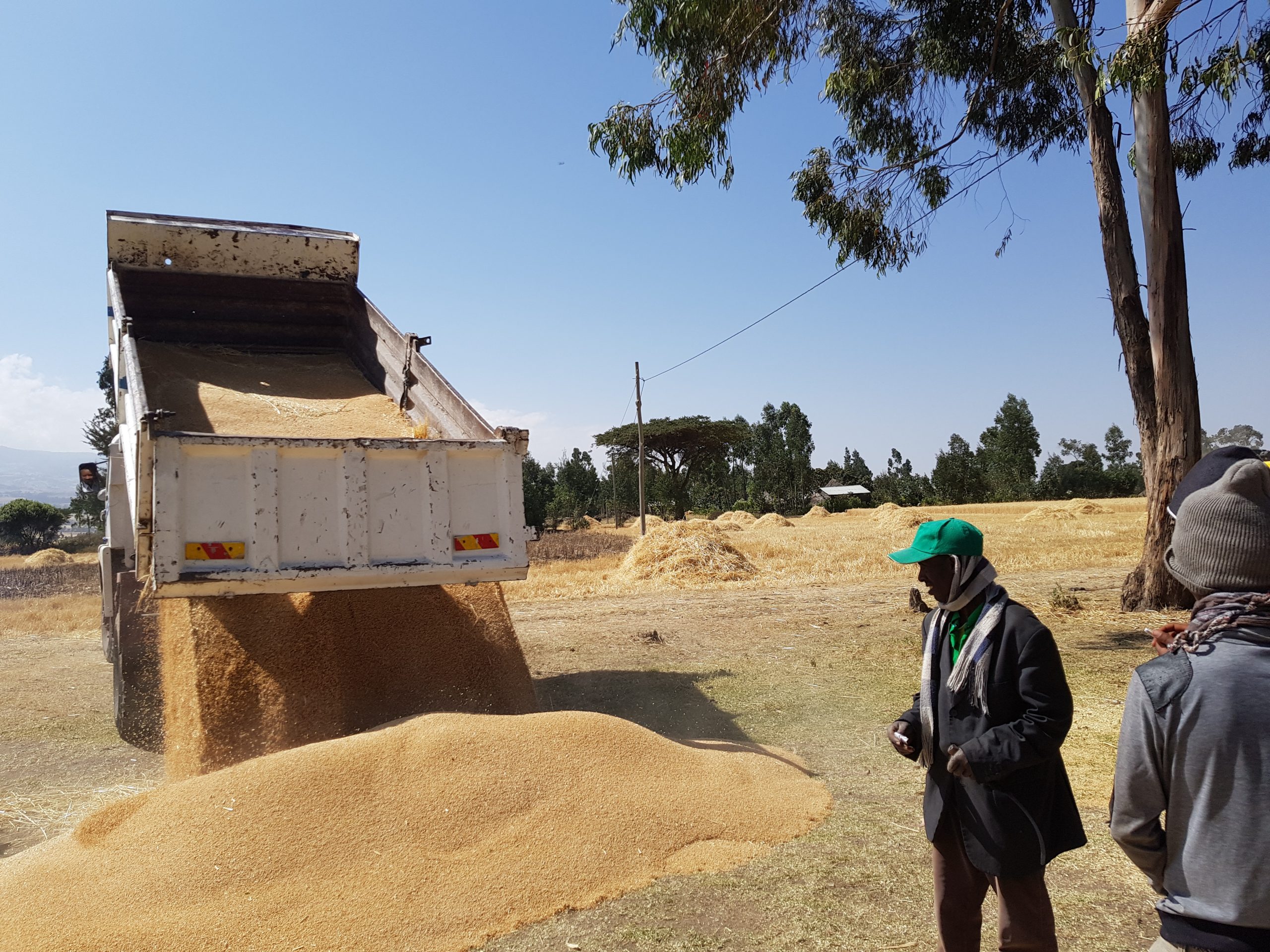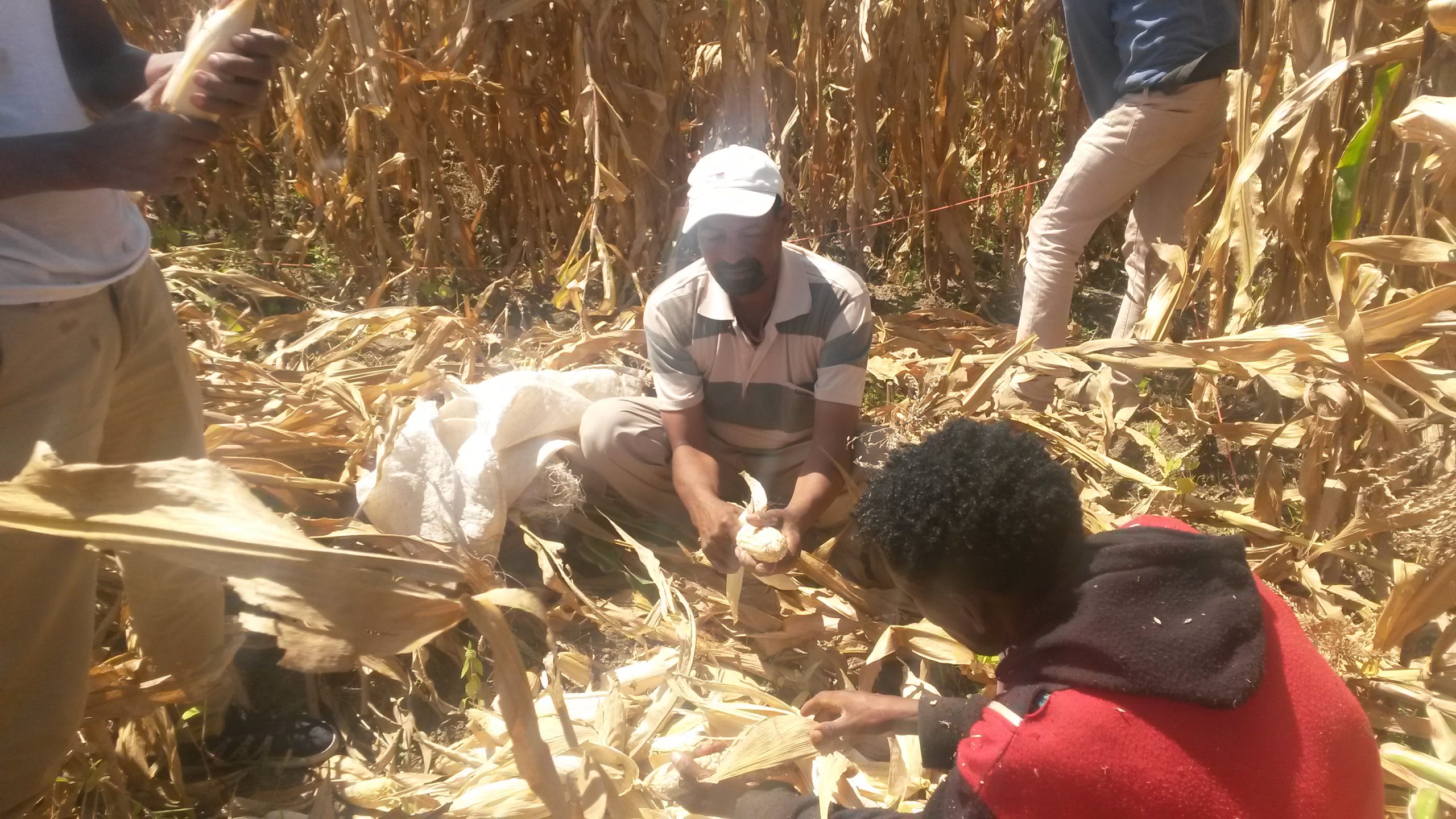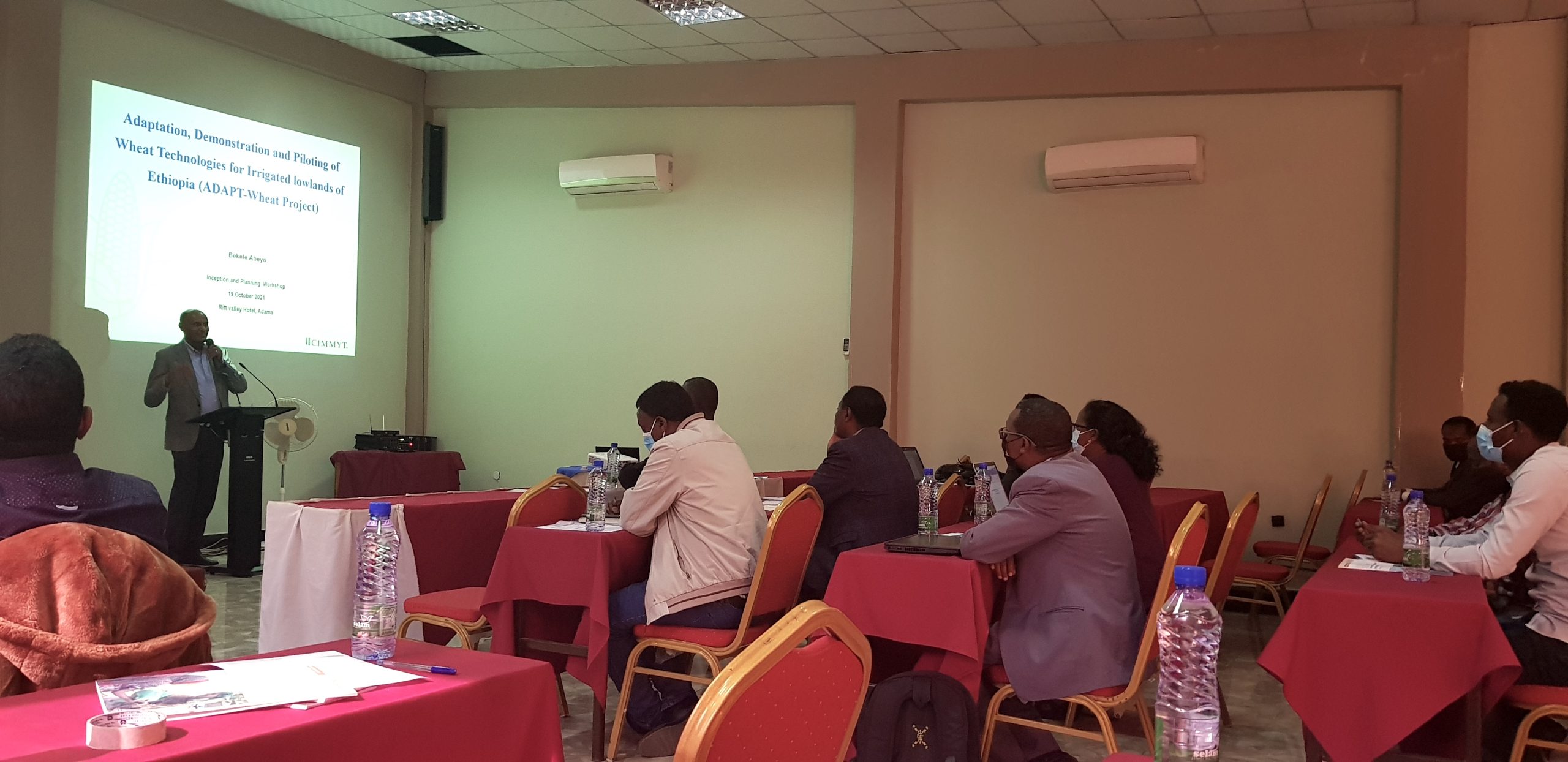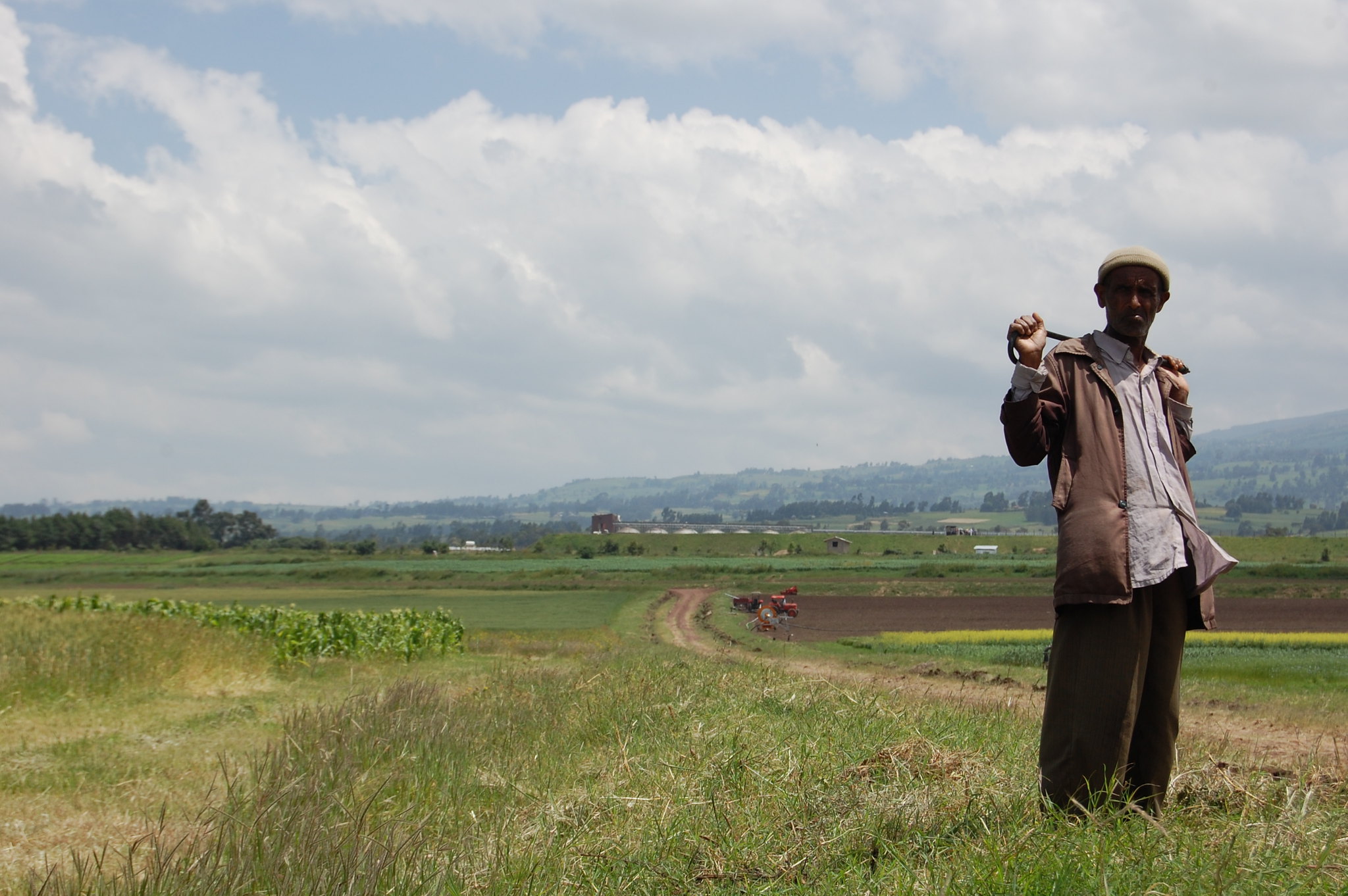Africa
CIMMYT’s work in Africa helps farmers access new maize and wheat systems-based technologies, information and markets, raising incomes and enhancing crop resilience to drought and climate change. CIMMYT sets priorities in consultation with ministries of agriculture, seed companies, farming communities and other stakeholders in the maize and wheat value chains. Our activities in Africa are wide ranging and include: breeding maize for drought tolerance and low-fertility soils, and for resistance to insect pests, foliar diseases and parasitic weeds; sustainably intensifying production in maize- and wheat-based systems; and investigating opportunities to reduce micronutrient and protein malnutrition among women and young children.
Plant breeding innovations
 Climate adaptation and mitigation
Climate adaptation and mitigation
Over millennia, natural selection and humans have systematically adapted the plant species that provide food and other vital products, changing their physical and genetic makeup for enhanced productivity, nutrition and resilience. Plant breeders apply science to continue improving crop varieties, making them more productive and better adapted to climate extremes, insects, drought and diseases.
New research highlights opportunities to deepen engagement with private sector for increasing impact from cereal breeding
 Capacity development
Capacity development
Contributions reflect the breadth of perspectives and expertise within CGIAR and beyond, calling for more demand-oriented variety development and seed delivery.
New CIMMYT maize hybrids available from Eastern Africa Breeding Program
 Innovations
Innovations
CIMMYT is offering a new set of improved maize hybrids to partners, to scale up production for farmers in the region.
New publications: Genome-wide breeding to curtail wheat blast
 Environmental health and biodiversity
Environmental health and biodiversity
Researchers evaluate the use of genomic selection in wheat breeding against deadly fungal disease.
High-yielding staple crops improve health and prosperity in developing countries
 Nutrition, health and food security
Nutrition, health and food security
New research uncovers long-term impacts of Green Revolution era productivity, points out lessons for today.
CIMMYT trains next generation of scientists to tackle soil-borne pathogens
 Capacity development
Capacity development
Two new graduates join pool of research leaders focused on finding new sources of resistance against these pathogens.
A decade of world-leading maize and wheat research
 Capacity development
Capacity development
Legacy websites and photo exhibition mark the closing of the CGIAR Research Programs on Maize and Wheat, and their impact on sustainable agricultural development.
Science, technology and farmers, the three pillars of CIMMYT at COP26
 Climate adaptation and mitigation
Climate adaptation and mitigation
At global climate summit, CIMMYT scientists share adaptation and mitigation solutions for farmers, and call for increased funding for agricultural research.
Bringing wild wheat’s untapped diversity into elite lines
 Environmental health and biodiversity
Environmental health and biodiversity
Researchers hypothesized that many wild wheat accessions in genebanks feature useful traits that can help diversify breeding programs.
A new vision of making profits drives mechanization service providers in Zimbabwe
 Innovations
Innovations
Service providers offering mechanized services in Masvingo District, southern Zimbabwe realize quick gains in early months of the pilot.
Is a pluralistic seeds system a pathway to seed security in Ethiopia?
 Nutrition, health and food security
Nutrition, health and food security
Efforts to support inclusive and equitable access to seeds by farmers should recognize the different seed systems and the complementarity of formal and informal seed systems.
Decomposing maize yield gaps to better inform policy and public investments
 Capacity development
Capacity development
Scientists from Wageningen University and CIMMYT documents the magnitude, patterns, and drivers of yield gaps in sub-Saharan Africa.
Workshop introduces new wheat farmer support project in Ethiopia
 Capacity development
Capacity development
The ADAPT-Wheat initiative will help small and medium-size wheat farmers in Ethiopia’s Awash Valley through pilot technologies and farming practices.
Adaptation, Demonstration and Piloting of Wheat Technologies for Irrigated Lowlands of Ethiopia (ADAPT-Wheat)
 Climate adaptation and mitigation
Climate adaptation and mitigation
